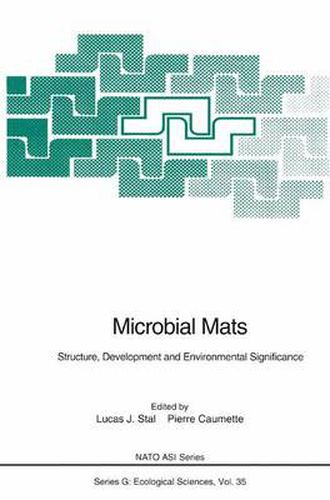Readings Newsletter
Become a Readings Member to make your shopping experience even easier.
Sign in or sign up for free!
You’re not far away from qualifying for FREE standard shipping within Australia
You’ve qualified for FREE standard shipping within Australia
The cart is loading…






This title is printed to order. This book may have been self-published. If so, we cannot guarantee the quality of the content. In the main most books will have gone through the editing process however some may not. We therefore suggest that you be aware of this before ordering this book. If in doubt check either the author or publisher’s details as we are unable to accept any returns unless they are faulty. Please contact us if you have any questions.
Microbial mats are benthic communities of a variety of microorganisms. Their investigation requires multidisciplinary studies and close cooperation between microbiologists, biogeochemists, and geologists. Reported here are recent advances in the study of structure, development and ecological relationships. The methodology described includes microsensors as well as new molecular techniques for the detection and identification of microorganisms. Increasing interest exists for applied aspects, e.g. the possibility to use natural or constructed microbial mats for the degradation of xenobiotics, for site remediation, etc.
$9.00 standard shipping within Australia
FREE standard shipping within Australia for orders over $100.00
Express & International shipping calculated at checkout
This title is printed to order. This book may have been self-published. If so, we cannot guarantee the quality of the content. In the main most books will have gone through the editing process however some may not. We therefore suggest that you be aware of this before ordering this book. If in doubt check either the author or publisher’s details as we are unable to accept any returns unless they are faulty. Please contact us if you have any questions.
Microbial mats are benthic communities of a variety of microorganisms. Their investigation requires multidisciplinary studies and close cooperation between microbiologists, biogeochemists, and geologists. Reported here are recent advances in the study of structure, development and ecological relationships. The methodology described includes microsensors as well as new molecular techniques for the detection and identification of microorganisms. Increasing interest exists for applied aspects, e.g. the possibility to use natural or constructed microbial mats for the degradation of xenobiotics, for site remediation, etc.